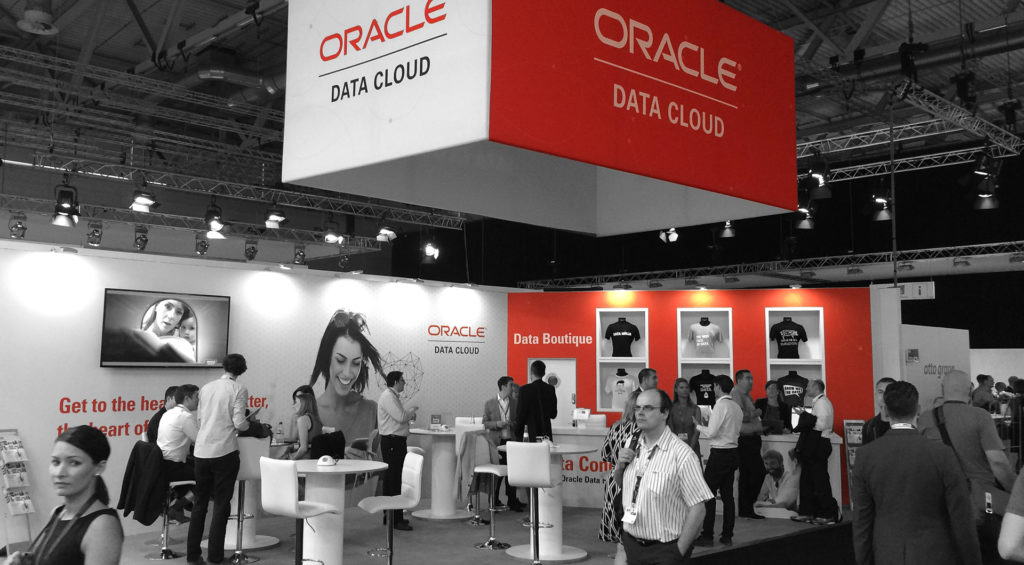Marketing is largely responsible for driving critical consumer-facing, revenue-generating systems and applications, and for a third consecutive year, those budgets will only continue to balloon.
A Gartner survey revealed Wednesday that 57 percent of executives working at companies with at least $250 million in revenue said they expect their marketing resources to increase.
With customer acquisition continuing to be a priority, marketers are placing an emphasis on using the dearth of data available to them to better make more informed decisions across their respective enterprises.
According to a June poll by Falcon.io, 64 percent of marketers indicate they use social data in their marketing activities.
The Oracle Data Cloud is taking a lead in the data deluge by fueling a competitive advantage for marketing and social to help companies drive smarter decisions in order to connect with consumers.
Cory Treffiletti, vice president of marketing and partner solutions for Oracle, joined [a]listdaily to discuss the strategy behind Oracle Data Cloud, and how data is enabling forward-thinking brands.

What is the concept and philosophy behind Oracle Data Cloud? How are you differing yourselves in the data deluge?
Oracle Data Cloud is the leader in Data as a Service (DaaS), which is really a techy way of saying we help our customers connect more deeply with their customers through the utilization of data. We provide marketers with the highest quality, highest scale third-party data as well as solutions and services around the connection of first-party data to enable better targeting, deeper personalization and effective measurement of their customer experiences. We aggregate data and feed it into any Software as a Service (SaaS) platform, both Oracle and non-Oracle stack, so your marketing programs will be more effective and accountable. An analogy I like to use is you can buy a car, but the car won’t work unless you put the right fuel into it. SaaS is the car, and DaaS is the fuel that drives the engine. For us, the biggest differentiator is our ID Graph, which connects billions of consumers across all of the devices they use—from mobile to desktop, tablets and beyond, into a unified view of the consumer. If you understand your audience more deeply, and you can identify and recognize them when you ‘see’ them across devices, you can connect and create a better, more long-lasting relationship.
How is Oracle Data Cloud building out its services to precisely target at scale?
We combine online intent signals, offline purchase data and apply layers of data science to it in order to ensure that we are providing solutions to our clients to precisely target at scale. We then organize ourselves in a go-to-market way that is centered on industry verticals, so that our team can speak the same language and understand the challenges faced by our customers. To us, it’s very important to be embedded in their category and centered around their needs rather than talking about what we do.
Can you detail your concept behind “relevant reach”? What does that exactly mean?
Relevant reach is the sweet spot between campaign scale and targeting accuracy. It’s about making sure you know and understand the audience you want to be speaking to, and can recognize them at scale. This approach helps us improve upon the flawed, but standard, practice where marketers focus on scale by building large, but ill-defined, audiences based on potentially inaccurate demographic data. This practice of broad targeting is problematic because it misses lots of potential buyers and reaches lots of uninterested households. Relevant reach increases accuracy while maintaining an effective scale for the campaigns, thus maximizing reach and impact without also reaching irrelevant households and wasting media spend.
How does Oracle leverage its suite of data services to fit within the overall company strategy?
One example of how Oracle is leveraging our suite of data services is through our recently announced next-generation cloud strategy in Adaptive Intelligent Applications. This new SaaS offering blends third-party data with real-time analytics and behavioral inputs to create Cloud Applications that automatically offer individualized recommended actions and streamline tasks of business users such as human resource and finance professionals. These offerings are based on the insights from the deep analytics contained within Oracle Data Cloud and help improve business results across organizations.

How has Oracle Data Cloud been received by marketers? Why is employing such services a big boon for brands?
We’ve been received well and we really do look at our customers as partners. We sit between the channels, the brands and the agencies, and we help all sides of the ecosystem to better utilize data for that deeper level of connection with the end-customer. We currently work with 96 of the top 100 US advertisers and the vast majority of global advertisers as well. Advertisers are quickly learning that data is a necessary element to the success of their campaigns, but data is a big environment so we help them make it small. We work side-by-side with our partners and we learn their challenges, use the same lexicon and speak the same language to enable solutions they need rather than fitting them into a box of products that we sell. The proof is in the results we prove time-and-time again. The more data-driven your strategy is, the better results and less waste in media spend you achieve.
How are you marketing Oracle Data Cloud?
We focus on helping our customer connect more deeply with their customers. We provide educational tools and enablement tools. We perform audience workshops and get very deeply involved in an almost consultative fashion up front to make sure that the data we have available and the solutions our teams can offer are tailored to your needs. We have a ‘traditional’ content strategy that drives demand, but we also offer a free service called The Data Hotline that takes in as many as 1,400 unique requests for questions around data segmentation and insights on a monthly basis and we turn around answers in less than 24 hours; this is a free service. We offer a no-cost Data Lab series that educates agency teams on the intricacies of the data landscape and we teach them about all the data providers in the category, not just the data we own and sell. We believe that in an emerging category, education will bring everyone forward, and we live by that strategy.
Earlier in September, Visa and Oracle introduced a service to help merchants understand whether their digital advertising efforts are influencing consumer purchase decisions. How will this help measure whether ad exposure led to a sales transaction?
As an example, a retailer who wants to promote a seasonal sale might select a target audience based on a mix of demographic and aggregated past purchase data. A digital ad is then delivered to that group using the Oracle ID Graph across multiple channels and devices. Visa and Oracle then work together to offer insight into whether or not a Visa credit card purchase was made online or in-store following the merchant’s digital ad views. These results help indicate the ad’s effectiveness, allowing marketers to adjust the offer, creative and/or channels accordingly.
Why is it critical for Fortune 500 companies to develop tailored marketing campaigns and products around data?
Your audience demands it. A recent study by Forrester stated that 77 percent of consumers do not appreciate inconsistent messaging across channels and devices, so they know when you are not paying attention. When you market to consumers without using data to target and measure the effectiveness of your campaigns, you are essentially shooting in the dark and wasting advertising dollars and that guarantees failure. Data-driven marketing not only allows advertisers to target their audience at the right place and time, but the data and results from measuring those campaigns inform future decisions on campaign content, creative and audiences.
How are you leveraging the use of cross-device services? How does proper execution help drive value for a brand?
The Oracle ID Graph, which is the power behind our linkage solutions such as OnRamp and Crosswise, connects billions of consumers across all of the devices they use—from mobile to desktop to tablets. This allows advertisers to create a more holistic view of their customers and more accurately reach them at the right time and place with the right message. This means you can identify a consumer, recognize where they may be in the customer journey and personalize that message to them. Most marketers can do this on a desktop, but that means you are missing the largest and fastest-growing portion of your audience on a mobile device. We remove that inefficiency.
How does data bridge the gap between advertising spend and business results?
Advertising without data is often wasted dollars. Data is essential in delivering the right message to the right person at the right time in the right place. Without good data, you don’t reach the right people, and you can’t tell if your advertising is working. It’s like driving a car with a blindfold on.
Follow Manouk Akopyan on Twitter @Manouk_Akopyan

